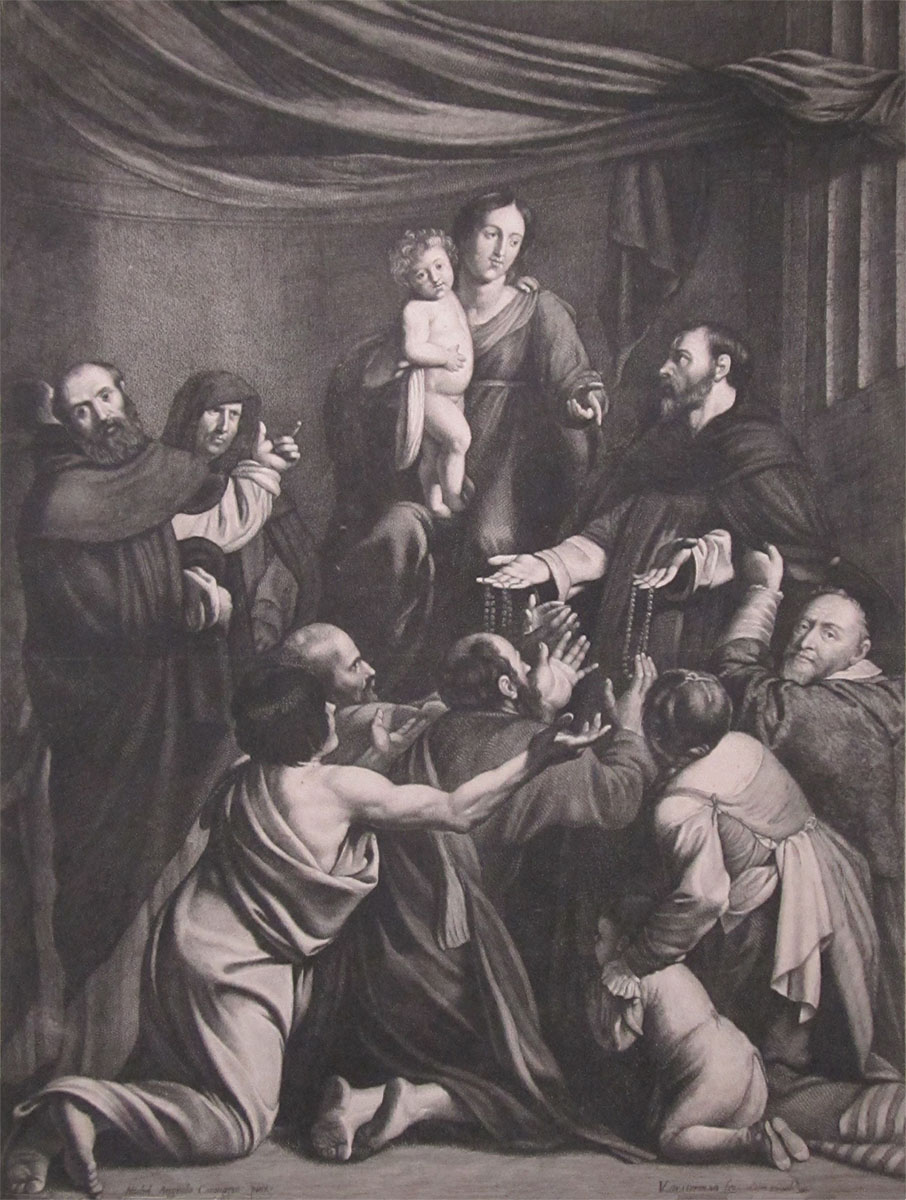Hercule Louis Catenacci
The Birth of Our Saviour
In The Life of Our Lord and Savior Jesus Christ and of the Blessed Virgin Mary
engraving
1879, published by the Benzinger Brothers
Courtesy of Archives and Special Collections
MERRY CHRISTMAS
“We desire to be able to welcome Jesus at Christmas-time, not in a cold manger of our heart, but in a heart full of love and humility, in a heart so pure, so immaculate, so warm with love for one another.” – St. Teresa of Calcutta
This engraved image depicting the birth of Jesus is from one of many bibles in the university’s Rare Book Library, which is cared for by the Department of Archives and Special Collections. This volume, entitled The Life of Our Lord and Saviour Jesus Christ and of his Virgin Mother Mary, was published in 1879 by Benzinger Brothers Publishing.[1] The illustration shown here was engraved by Hercule Louis Catenacci, a French painter and illustrator.
Catenacci was born in Ferrara, a province in present-day Italy, in 1816. He later moved to France, illustrating numerous books and journals on a variety of subjects. Cantenacci’s versatility was demonstrated thematically as well in his ability to adopt numerous illustrative styles depending upon the commission. His illustrations included Moorish architecture in Spain, sarcophagus designs from a French exposition, the art and architecture of India, liturgical objects, garden landscapes, Italian piazzas, Cambodian ruins and images of protestors.[2]
Benzinger Brothers Publishing was founded in Switzerland in 1792 with the express purpose of functioning as a Catholic publishing house. In the late 19th century, the publisher expanded its operations to the United States, opening offices in Chicago and Cincinnati.[3] It has been through many iterations since then, being bought, sold and consolidated several times. Still in existence today, Benzinger Brothers has been operating under the name RCL Benzinger since 2016, when it became a subsidiary of Kendall Hunt Publishing of Dubuque, Iowa.[4] RCL Benzinger still has offices in Cincinnati and primarily serves religious education programs for Catholic dioceses, parishes, schools, families, and individuals, including bilingual students and students with disabilities.[5]
The images and materials shown here are but a small part of the vast patrimony available to students, faculty and researchers. For access to this or other objects in our collections, complete a research request form to set up an appointment or contact us at 973-761-9476.
[1] The Life Of Our Lord And Saviour Jesus Christ And Of His Virgin 1 Mother Mary. New York: Benzinger Brothers, 1879. p.298.
[2] https://commons.wikimedia.org/wiki/Category:Hercule_Catenacci, accessed 12/14/2020.
[3] https://en.wikipedia.org/wiki/RCL_Benziger, accessed 12/14/2020.
[4]https://www.google.com/search?q=kendall+hunt+publishing&rlz=1C1GCEV_en&oq=kendall+hunt+publishing&aqs=chrome..69i57j0l7.2790j0j7&sourceid=chrome&ie=UTF-8
[5] https://rclbenziger.com/our-history, accessed 12/14/2020.


